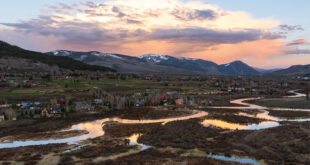*For the editorial this week, we have published a commentary by Bruce Driver
Writing on behalf of the Alliance for Clean Electricity (ACE). For more information on joining ACE, please contact Brittney Holder at 349-7104.
To the editor:
As Evan Dawson reported last week, on October 18, the Director of the Kansas Department of Health and the Environment (KDHE) denied permits for two pulverized coal electric generation units totaling 1400 megawatts (MW) proposed by Tri-State and Sunflower, both electric generation and transmission associations.
The director’s basis? Concern over climate change. And with good reason: These two units, if built, would generate an estimated 7.4 million tons of CO2 per annum on top of the 10.9 million tons already generated by the Tri-State system, 79% dependent on conventional, dirty coal units.
The director’s decision is a major victory for forces who have been fighting these and other coal units around the U.S. In this regard, in 2007 alone, 14,000 MW of proposed new coal generation capacity have been canceled and another 32,000 deferred. Regulators, Wall Street, utilities and others are deciding that it is financially too risky, and in any event is not responsible to future generations, to just build more coal-fired power generation units without capturing carbon dioxide and sequestering it.
Mr. Dawson’s article says that GCEA Board member Lou Costello stated that “the [Kansas] plant would have incorporated a state-of-the-art algae recycling system for carbon, a by-product of which is biofuel.” However, to our knowledge the only step Tri-State and Sunflower have made toward this process is to agree to a small-scale pilot project. Even were the technology to be tested in a pilot shown to work for Tri-State and Sunflower, ultimately it is limited in its ability to sequester carbon, since algae won’t grow without sunlight, available at best 50% of the time, no matter how much carbon it is force-fed. The algae-growing system is no silver bullet for carbon at the Kansas coal plant.
While denial of the permit for these units is a major victory for those interested in sustainable energy, it does pose a challenge for Tri-State and GCEA: How will they meet the demand?
In facing this challenge, GCEA and Tri-State have two distinctly different paths they might follow: First, they can fight the denial of the permits and, as a fallback, attempt to site the coal units elsewhere, in particular, in southeast Colorado, where Tri-State has said in the past that it wants to build a coal plant. Or, second, they can take a deep breath and revisit Tri-State’s existing resource plan in the next months, looking for less carbon-intensive ways of meeting our electric loads.
We urge Tri-State and, here at home, GCEA to travel down the second path for several reasons. Among them are:
1.Tri-State definitely has the time to revisit its resource plan. We believe that Tri-State has over-forecasted demand for power on its system. For example, while Tri-State had forecasted that demand for power would grow by about 7% in 2007, it was essentially flat through July. We do not face lights-out if Tri-State takes the time to revisit its existing resource plan.
2.Tri-State has just begun to look into how much it might be able to rely on energy-efficiency investments to reduce demand for power below what it otherwise would be. The efficiency resource appears abundant across the Tri-State region. So, Tri-State and its co-op-members, like GCEA, should take the time right now to design the programs needed to harness this resource.
3. Similarly, Tri-State has only just begun to assess the potential of renewable resources to generate power economically. Wind is the key resource in the short-run. But, looking out a few years, solar is the big ticket item. In this regard, the costs of concentrating solar power (CSP) are coming down rapidly. CSP may soon be competitive with power from coal units, especially when an economic penalty is placed on carbon emissions. The Tri-State system should quickly ramp up its attention to renewables.
4. Xcel Energy is going forward with a utility-scale project using coal gasification with carbon capture and sequestration. Tri-State could partner with Xcel on this project.
5. Tri-State could also add more gas-fired combined cycle (CC) capacity than it plans. CC is a highly efficient way to use natural gas in the generation of electricity.
6. Tri-State should also look seriously at reliance on combined heat and power resources, which capture the waste heat from industrial processes to generate additional electricity without additional pollution.
It’s important to realize that, as the customer-owners of GCEA, we not only have a dog in this hunt but a vote in how it develops. GCEA, itself, has a vote on the Tri-State Board, which meets next in mid-November. In this regard, the town of Crested Butte recently passed an ordinance dealing with outdoor heating. The carbon savings inherent in that action when compared to the savings attributable to not building the Holcomb coal units are like the proverbial drop of water in the ocean. So, if we cared about outdoor heating in Crested Butte, we should really care about the permit denials as well as GCEA’s position on them.
GCEA Board members need to hear from the community that GCEA should see the denial of the permits as an opportunity to revisit Tri-State’s plan, consistent with the “prudent business practices” which GCEA must employ to be consistent with its Mission Statement, not as an invitation to hire lawyers to attack the denial or to build a coal plant in Colorado. When GCEA signed the contract extension with Tri-State last spring, GCEA said signing the extension would give it more leverage in dealing with Tri-State. Now is the time to use that leverage.
 The Crested Butte News Serving the Gunnison Valley since 1999
The Crested Butte News Serving the Gunnison Valley since 1999





